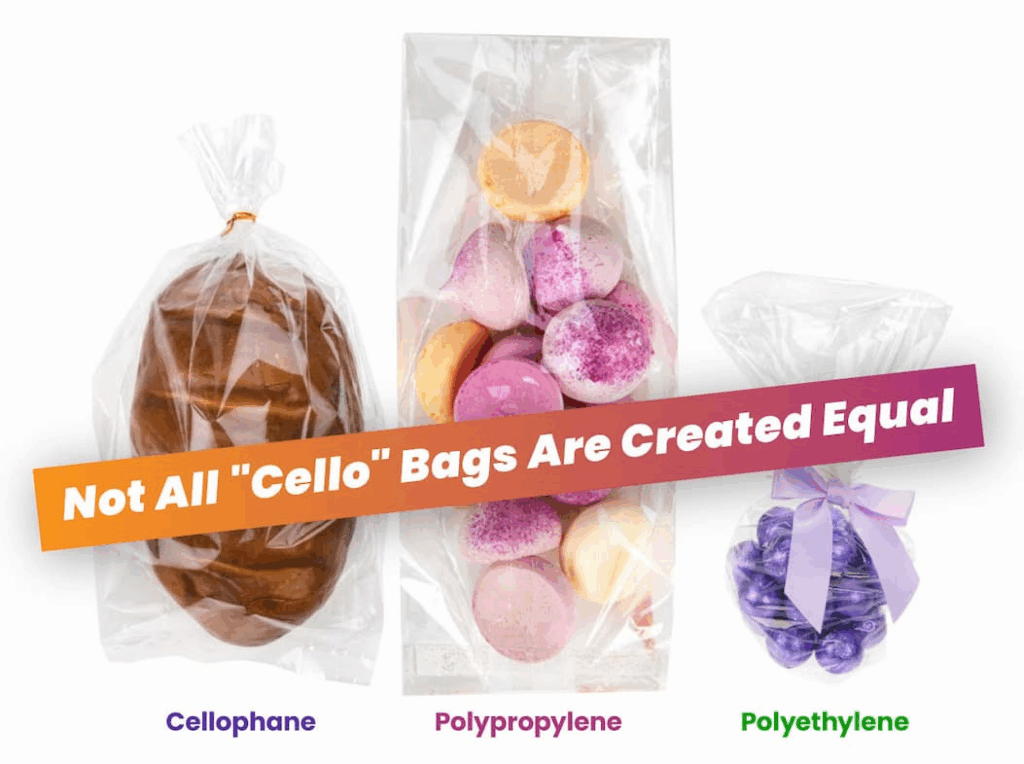Cellophane vs. Polypropylene vs. Polyethylene?
Last Updated on July 11, 2025 by Kira Andrus

If you’ve ever searched for cellophane bags, you’re not alone. But did you know that most “cello bags” on the market aren’t actually made from real cellophane?
Let’s break it down:
Cellophane:
Made from natural cellulose (typically wood pulp), true cellophane is biodegradable and compostable. It has a classic crisp feel and offers a more eco friendly alternative to plastics. However, it’s less common and not as moisture resistant.
Polypropylene (PP):
This is the most common material used in what’s often called a “cello bag.” It’s crystal clear, lightweight, and has excellent moisture barrier properties. Polypropylene (PP) bags are ideal for packaging food, candy, stationery, and more. PP is recyclable in some areas.
Polyethylene (PE):
Softer and more flexible than polypropylene, PE is used in many resealable or zipper bags. It’s less clear, but more durable–often chosen for industrial, bulk, or protective applications.
The Bottom Line:
When you’re shopping for “cellophane bags,” you’re most likely getting polypropylene and that is a good thing! It provides the clarity and protective qualities you need for a variety of packaging uses.
Have questions about which material is right for your product? We’re here to help! Give us a call at 800-233-2630 or email us at [email protected].



